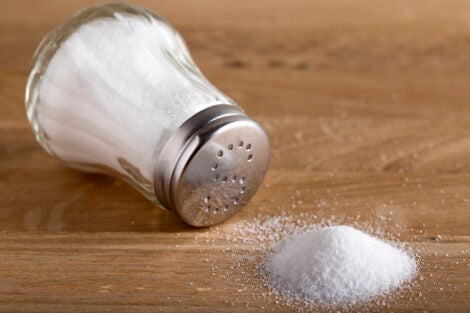March 22, 2024 — While some researchers disagree about recommended limits for sodium consumption, they agree that most Americans get too much in their diets—which increases risk of high blood pressure and heart disease.
The federal government’s Dietary Guidelines for Americans recommend no more than 2,300 milligrams per day for adults, which equals about a teaspoon of table salt.
Cutting back can be difficult and it’s hard to know if you are over the limit. But any reduction in sodium would likely be helpful for most people, Frank Hu, Fredrick J. Stare Professor of Nutrition and Epidemiology and chair of the Department of Nutrition at Harvard T.H. Chan School of Public Health, said in a March 19 New York Times article.
He and other experts quoted in the article suggested focusing on cooking at home instead of eating processed food or restaurant meals, which tend to be where people get most of the sodium in their diets. They also recommended eating more foods that are part of healthy dietary patterns like the Mediterranean Diet—such as vegetables, fruits, beans, and nuts—that tend to be low in sodium and are high in potassium, which helps the body remove excess sodium from the blood.
Excess sodium’s effects on the body are cumulative, so it’s better not to wait until you have high blood pressure to start making changes, experts said in the article. Hu added, “Prevention is certainly much better than treatment.”
Read the New York Times article: Your Questions About Sodium, Answered
